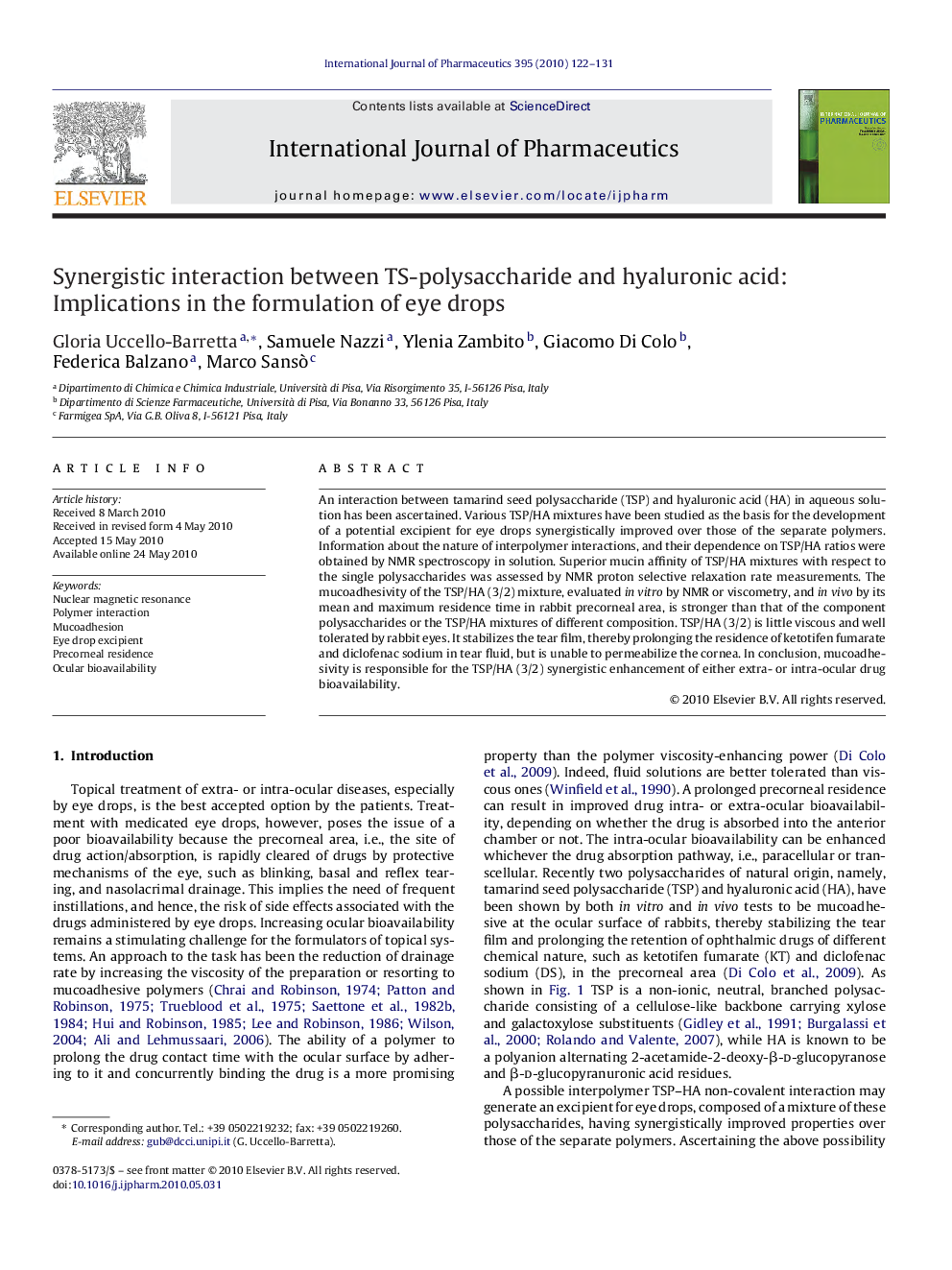| Article ID | Journal | Published Year | Pages | File Type |
|---|---|---|---|---|
| 2503972 | International Journal of Pharmaceutics | 2010 | 10 Pages |
An interaction between tamarind seed polysaccharide (TSP) and hyaluronic acid (HA) in aqueous solution has been ascertained. Various TSP/HA mixtures have been studied as the basis for the development of a potential excipient for eye drops synergistically improved over those of the separate polymers. Information about the nature of interpolymer interactions, and their dependence on TSP/HA ratios were obtained by NMR spectroscopy in solution. Superior mucin affinity of TSP/HA mixtures with respect to the single polysaccharides was assessed by NMR proton selective relaxation rate measurements. The mucoadhesivity of the TSP/HA (3/2) mixture, evaluated in vitro by NMR or viscometry, and in vivo by its mean and maximum residence time in rabbit precorneal area, is stronger than that of the component polysaccharides or the TSP/HA mixtures of different composition. TSP/HA (3/2) is little viscous and well tolerated by rabbit eyes. It stabilizes the tear film, thereby prolonging the residence of ketotifen fumarate and diclofenac sodium in tear fluid, but is unable to permeabilize the cornea. In conclusion, mucoadhesivity is responsible for the TSP/HA (3/2) synergistic enhancement of either extra- or intra-ocular drug bioavailability.
